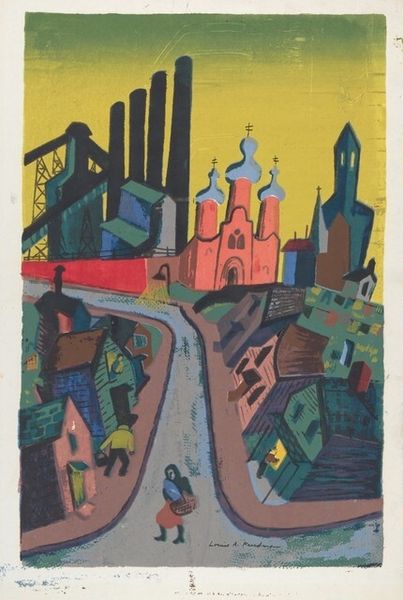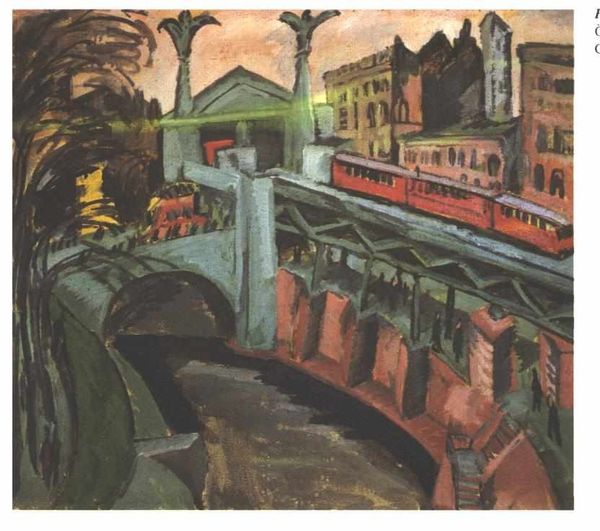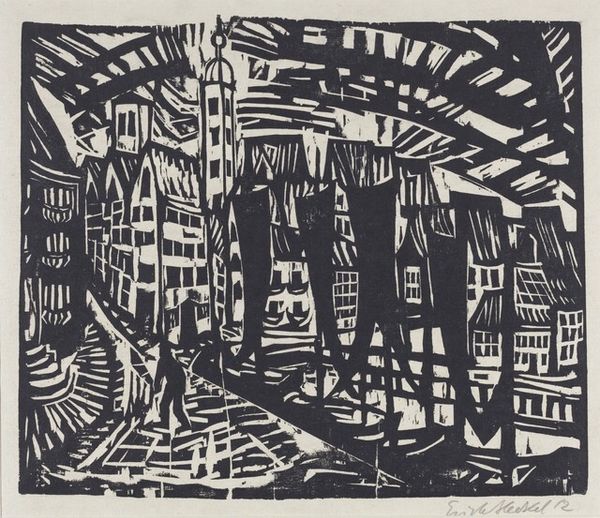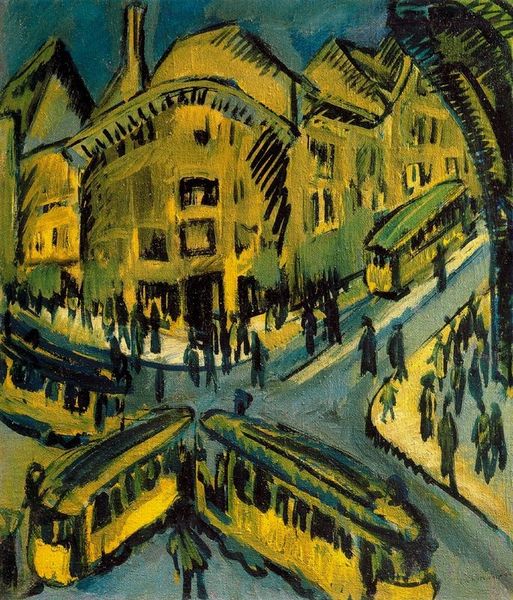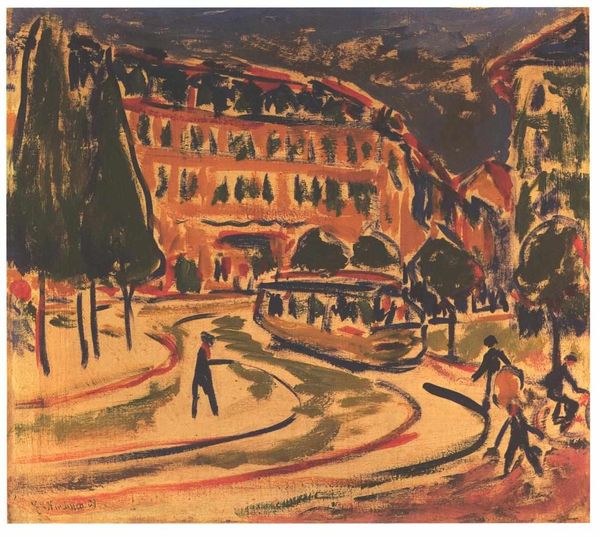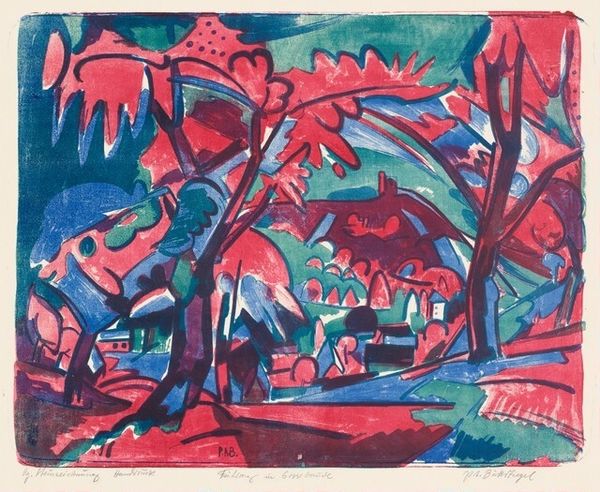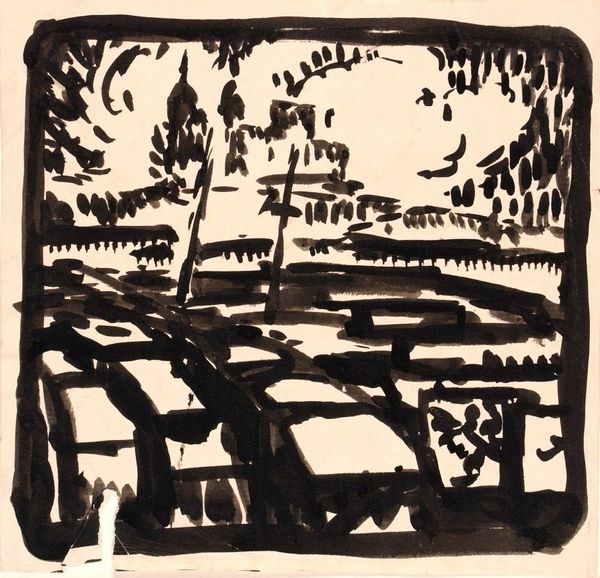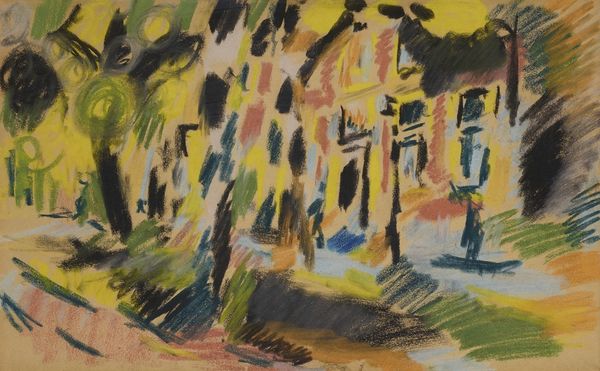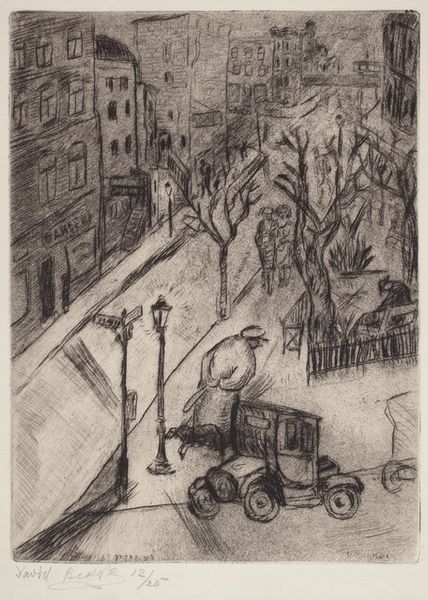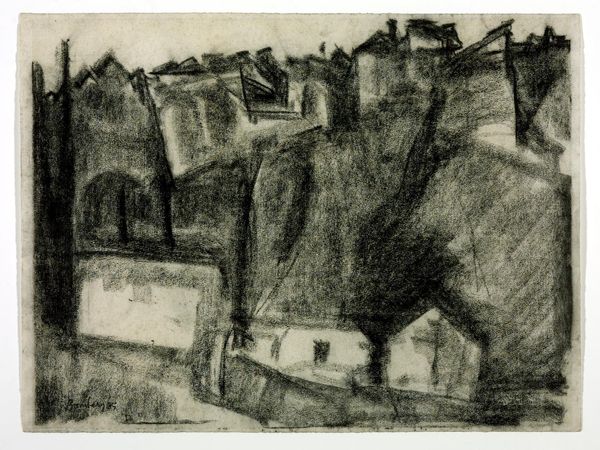
painting, oil-paint
#
ink painting
#
painting
#
oil-paint
#
landscape
#
german-expressionism
#
expressionism
#
cityscape
#
street
Copyright: Public domain
Editor: Here we have "Gelbes Engelufer in Berlin", an oil painting, possibly by Ernst Ludwig Kirchner. It strikes me with its melancholic mood, even though the colours are warm. It's like a pre-war unease settled onto a rather ordinary city street. What do you see in it? Curator: The way the materials are handled here tells us so much. Notice how Kirchner builds up the paint, creating a tactile surface that almost vibrates. This wasn't just about depicting a cityscape; it was about *making* one, forcing materiality to convey modern life's intensity. Editor: I see. So, it’s not just about the image, but also about what he physically *did* with the paint. What was Expressionism’s role here? Curator: Exactly! Expressionism isn't about representing the world; it’s about externalizing inner feelings. Kirchner chose rough application techniques over traditional artistry because of that. In many ways, the consumption and sale of paintings like this funded a lifestyle – can you spot the labour here? Editor: Is it in the application technique? Kirchner does leave traces of the labour. Curator: Yes, and beyond that – who ground the pigment? Who stretched the canvas? What was the social position of art-making in pre-war Germany, with its shifting class structures and anxieties about industrialization? The anxieties of pre-war Germany come to mind. The art itself serves to distract. Editor: I see, understanding art then depends on our cultural understanding of its processes and making too, which brings it alive again. Thank you for enlightening me. Curator: Absolutely. The process reveals the artist’s own world. It opens doors to how it all comes together as something people appreciate as “art.”
Comments
No comments
Be the first to comment and join the conversation on the ultimate creative platform.
